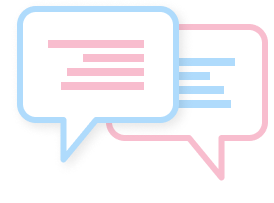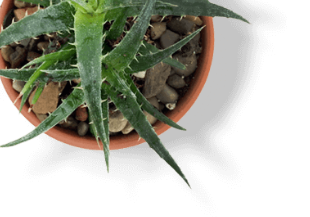The internet has become an integral part of our daily lives and has grown at the speed of light. Between 1995 and 2016, the number of users grew from 44 million to 3.4 billion (3.4 billion), and the number continues to increase. You’ve probably heard of the term “Internet of Things,” known as IoT. And even if you have not heard it, it is more than certain that you use IoT devices regularly. But, do you know exactly what the Internet of Things is, how it affects your daily life, what are its risks and where it is headed? Here we explain it to you.
Older Days…
If we start thinking about it, it was not really so long ago that, when we wanted to connect to the network on our computers (which was the only way to do it), we had to wait until the phone line was free to use, enter our username and password, and prepare to hear that horrible squeaky sound of access. And a few minutes later, if everything went well, we breathed with relief when we heard a robotic voice telling us that we had received an email, with the iconic English phrase “you’ve got mail”.
The broadband connection made things much easier. We could make a phone call and be on the web at the same time, and it no longer felt like an epic conquest to do something as simple as downloading a file. The internet became faster and easier to use, and more and more people began to discover and take advantage of its significant benefits until they reached speeds that were not imagined at the beginning. In 2018, according to Speedtest, the average download speed through fixed broadband in the United States was 95.25 Mbps and the upload speed was 32.88 Mbps.
Today, most people are surprised to hear that someone do not use the Internet. According to recent surveys, approximately nine out of 10 adults in the United States use the network, and we are no longer restricted to our computers, but it has become part of our daily lives inside and outside the home.
What exactly is IoT or the Internet of Things?
By definition, the Internet of Things is “the interconnection through the Internet of computer devices integrated into everyday objects, which allows them to send and receive data.” In other words, IoT connects your devices to the Internet or other devices, so they can perform new functions, such as remotely controlling smart items and receiving alerts and status updates. It refers to the billions of physical devices worldwide that are now connected, collecting and sharing data.
Thanks to the wireless networks and the low cost of the new processors, it is possible that almost anything, from a smart vacuum to an autonomous vehicle, is part of the IoT. This adds a level of digital intelligence to the devices that allows them to communicate data in real-time without the participation of a human being, somehow fusing the digital world with the physical one.
What are IoT devices?
The answer is simple: all devices connected in a smart home, such as thermostats, light switches or spotlights, locks, security cameras, and other smart appliances and appliances, are IoT devices, in addition to autonomous vehicles and a number of other technologies.
Think of it this way: if a device can connect directly to the Internet, or if it can connect to some other device that connects to the Internet (but is not a computer device that would be expected to have an Internet connection to make its main functions), probably fits the definition.
What role do voice assistants like Alexa or Google Assistant play?
Since smart speakers like Amazon Echo, Google Home or Apple’s HomePod are IoT devices, integrated smart assistants, such as Alexa, Google Assistant, and Siri can control smart home products. All these companies and several others that want a piece of cake from the growing smart home market continue to expand their efforts to improve their functions and become the IoT operating system that consumers choose to control their lights, locks, vacuum cleaners, cameras and appliances, all in one place.
What are the risks of IoT?
However, without the hazards intrinsic in this form of technology, the advantages of IoT do not come. The first malware was launched in 2016 that proved its vulnerability. Known by Mirai’s name, this malware used the default passwords and usernames to access some equipment. Changing the default information and customizing it is always recommended for these types of situations.
What happened after? The malware transformed the impacted equipment into a botnet, according to Norton Security, to enable a Distributed Denial of Service (DDoS) attack aimed at overwhelming Internet traffic websites. The attack ended up flooding one of the world’s biggest website hosting businesses, causing a range of major websites and services to be interrupted for hours. This specific malware range is called “open source,” which implies that anybody can change the code.
Because most IoT devices, like the antivirus of your computer, cannot have safety software installed, they may be susceptible to assaults. This is where your router plays a very significant part since it is fundamentally the point of internet access to your home.
While many of its connected devices cannot be protected, the router has the ability to provide protection at the point of entry and provide a certain level of security, such as password protection, firewalls and the ability to configure them to allow only certain devices to be connected to your network.
It is also very important from your end to choose your supplier and developer wisely. If the hardware of IoT device is not up to the mark, there are chances that it can’t perform with the brilliant software. More importantly, hire a developer who has a portfolio and expertise in Internet of Things. You can always ask us questions regarding the process to adopt IoT for your home or business. Zazz is always here to help.
What is the future of IoT?
Most estimates state that, by 2025, there will be more than 21 billion (21 billion) IoT devices, and some believe the number could be even greater. As more IoT products reach the market, an increasing number of people are getting involved in the smart home trend, and therefore, the expectation that household items can connect to Wi-Fi is already part of almost any decision when buying a new product.
But independent consumers will not be the only ones who will use IoT devices. Cities and businesses will increasingly adopt smart technologies to save time and money. That means that cities will be able to automate, manage remotely, and collect data through visitor kiosks, surveillance systems with video cameras, bike rental stations and taxis, and an increasing number of functions that are already being deployed in several smart cities in the United States and in other cities globally.
Report ensures that IoT will dominate business sectors
A Microsoft report states that 94 percent of companies will use IoT by the end of 2021. The report also proved that IoT is already an intrinsic part of a variety of important manufacturing, commerce and transportation industries, and even in the areas Government and medical care.
“The growth of IoT shows no signs of slowing down: adoption is expected to increase by 9 points over the next two years, which means that 94% of companies will use IoT by the end of 2021,” the document said.
According to Windows Central, Microsoft hired Hypothesis Group to carry out the investigation during the first half of 2019, and the data comes from a 20-minute online survey with more than 3,000 executive representatives of companies globally, focusing on the United States, the United Kingdom, Germany, France, China, and Japan.
Also Read
Top 10 IoT Development Companies Los Angeles
How IoT is Contributing To Environmental Sustainability
Leading IoT Development Company in Chicago
Top 10 IoT Development Companies in New York
Top IoT Development Companies in San Francisco
Recent Articles
The Top 10 Successful App Developers...
Hiring an app developers company is no easy feat. In...
Top 10 Innovative Mobile App Developers...
San Francisco has an incredibly diverse and a magnificent tech...
Top 10 Most Trusted Mobile App...
Houston boasts of a splendid tech landscape that is mushrooming...






